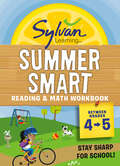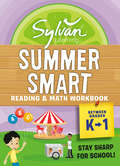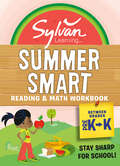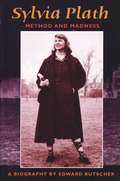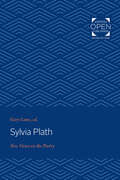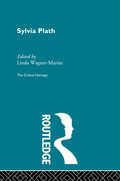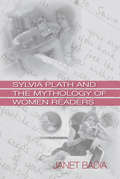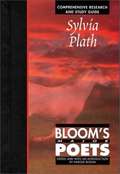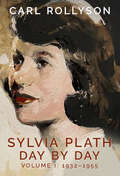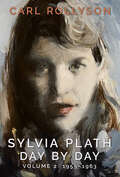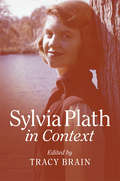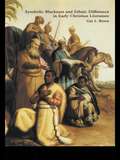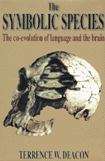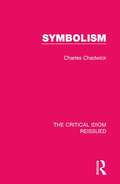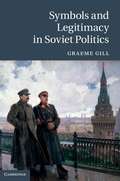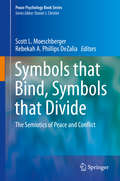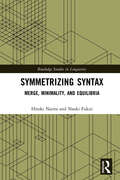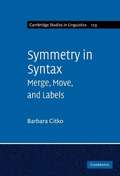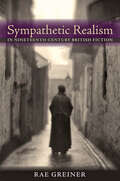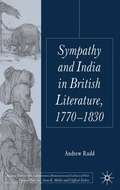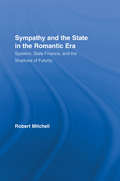- Table View
- List View
Sylvan Summer Smart Workbook: Between Grades 4 & 5 (Sylvan Summer Smart Workbooks)
by Sylvan LearningStop "summer slide" and get ready to return to the classroom for 5th grade with Sylvan's SUMMER SMART Workbooks!Research shows that kids can lose up to 2.5 months' worth of hard-earned knowledge from the previous grade over the summer vacation break. That's why we at Sylvan Learning—America's #1 tutoring brand—created the SUMMER SMART workbook series!Packed with fun exercises and teacher-created activities, this book reinforces math and reading concepts your child learned in 4th grade, including: • Addition and subtraction • Multiplication and division• Fractions and decimals• Time and money• Facts and opinions• Comparing and contrasting• Story-planning• Reading between the linesInside each Summer Smart book, you'll also find:• Teacher tips for staying sharp over the summer• Special &“Vacation Challenge!&” activities and games section• Cut-out flashcard sheets and recommended reading lists• A &“Summer Smart!&” Achievement CertificateLet the experts at America's #1 tutoring brand help get your child ready for 5th grade!***** Why Sylvan Products Work ***** Sylvan Learning Workbooks won a National Parenting Publications Awards (NAPPA) Honors Award as a top book series for children in the elementary-aged category. NAPPA is the nation&’s most comprehensive awards program for children&’s products and parenting resources and has been critically reviewing products since 1990. The Award recognizes Sylvan Learning Workbooks as some of the most innovative and useful products geared to parents. Sylvan's proven system inspires kids to learn and has helped children nationwide catch up, keep up, and get ahead in school. Sylvan has been a trusted partner for parents for thirty years, and has based their supplemental education success on programs developed through a focus on the highest educational standards and detailed research. Sylvan&’s line of educational products equips families with fun, effective, and grade-appropriate learning tools. Our workbooks and learning kits feature activities, stories, and games to reinforce the skills children need to develop and achieve their academic potential. Students will reap the rewards of improved confidence and a newfound love of learning.
Sylvan Summer Smart Workbook: Between Grades K & 1 (Sylvan Summer Smart Workbooks)
by Sylvan LearningStop "summer slide" and get ready to return to the classroom for 1st grade with Sylvan's SUMMER SMART Workbooks!Research shows that kids can lose up to 2.5 months' worth of hard-earned knowledge from the previous grade over the summer vacation break. That's why we at Sylvan Learning—America's #1 tutoring brand—created the SUMMER SMART workbook series!Packed with fun exercises and teacher-created activities, this book reinforces math and reading concepts your child learned in kindergarten, including: • Numbers• Patterns • Shapes • Letters and sounds • Words to know• Story comprehensionInside each Summer Smart book, you'll also find:• Teacher tips for staying sharp over the summer• Special &“Vacation Challenge!&” activities and games section• Cut-out flashcard sheets and recommended reading lists• A &“Summer Smart!&” Achievement CertificateLet the experts at America's #1 tutoring brand help get your child ready for 1st grade!***** Why Sylvan Products Work ***** Sylvan Learning Workbooks won a National Parenting Publications Awards (NAPPA) Honors Award as a top book series for children in the elementary-aged category. NAPPA is the nation&’s most comprehensive awards program for children&’s products and parenting resources and has been critically reviewing products since 1990. The Award recognizes Sylvan Learning Workbooks as some of the most innovative and useful products geared to parents. Sylvan's proven system inspires kids to learn and has helped children nationwide catch up, keep up, and get ahead in school. Sylvan has been a trusted partner for parents for thirty years, and has based their supplemental education success on programs developed through a focus on the highest educational standards and detailed research. Sylvan&’s line of educational products equips families with fun, effective, and grade-appropriate learning tools. Our workbooks and learning kits feature activities, stories, and games to reinforce the skills children need to develop and achieve their academic potential. Students will reap the rewards of improved confidence and a newfound love of learning.
Sylvan Summer Smart Workbook: Between Grades Pre-K & Kindergarten (Sylvan Summer Smart Workbooks)
by Sylvan LearningStop "summer slide" and get ready to return to the classroom for kindergarten with Sylvan's SUMMER SMART Workbooks!Research shows that kids can lose up to 2.5 months' worth of hard-earned knowledge from the previous grade over the summer vacation break. That's why we at Sylvan Learning—America's #1 tutoring brand—created the SUMMER SMART workbook series!Packed with fun exercises and teacher-created activities, this book reinforces math and reading concepts your child learned in pre-k, including: • Basic numbers and counting • Upper and lowercase letters• Drawing numbers • Drawing lettersInside each Summer Smart book, you'll also find:• Teacher tips for staying sharp over the summer• Special &“Vacation Challenge!&” activities and games section• Cut-out flashcard sheets and recommended reading lists• A &“Summer Smart!&” Achievement CertificateLet the experts at America's #1 tutoring brand help get your child ready for kindergarten!***** Why Sylvan Products Work ***** Sylvan Learning Workbooks won a National Parenting Publications Awards (NAPPA) Honors Award as a top book series for children in the elementary-aged category. NAPPA is the nation&’s most comprehensive awards program for children&’s products and parenting resources and has been critically reviewing products since 1990. The Award recognizes Sylvan Learning Workbooks as some of the most innovative and useful products geared to parents. Sylvan's proven system inspires kids to learn and has helped children nationwide catch up, keep up, and get ahead in school. Sylvan has been a trusted partner for parents for thirty years, and has based their supplemental education success on programs developed through a focus on the highest educational standards and detailed research. Sylvan&’s line of educational products equips families with fun, effective, and grade-appropriate learning tools. Our workbooks and learning kits feature activities, stories, and games to reinforce the skills children need to develop and achieve their academic potential. Students will reap the rewards of improved confidence and a newfound love of learning.
Sylvia Plath: Method and Madness
by Edward ButscherThis is the first full-length biography of Sylvia Plath, whose suicide in made her a misinterpreted cause celebre and catapulted her into the ranks of the major confessional voices of her generation.
Sylvia Plath: Method and Madness
by Edward ButscherBiography of the famous, gifted poetess whose short life has become a legend
Sylvia Plath: New Views on the Poetry
by Gary LaneOriginally published in 1979. Sylvia Plath is one of the most controversial poets of our time. For some readers, she is the symbol of women oppressed. For others, she is the triumphant victim of her own intensity—the poet pursuing sensation to the ultimate uncertainty, death. For still others, she is a doomed innocent whose sensibilities were too acute for the coarseness of our world. The new essays of this edited collection (with a single exception, all were written for this book) broaden the perspective of Plath criticism by going beyond the images of Plath as a cult figure to discuss Plath the poet. The contributors—among them Calvin Bedient, Hugh Kenner, J. D. O'Hara, and Marjorie Perloff—draw on material that most previous commentators lacked: a substantial body of Plath's poetry and prose, a moderately detailed biographical record, and an important selection of the poet's correspondence. The result is an important and provocative volume, one in which major critics offer an abundance of insights into the poet's mind and creative process. It offers insightful and original readings of many poems—some, like "Berck-Plage," scarcely mentioned in previous criticism—and fosters new understandings of such matters as Plath's comedy, the development of her poetic voice, and her relation to poetic traditions. The serious reader, whatever his or her initial opinion of Sylvia Plath, is sure to find that opinion challenged, changed, or deepened. These essays offer insights into a violently interesting poet, one who despite, or perhaps because of, her suicide at age thirty continues to fascinate and trouble us.
Sylvia Plath (The\critical Heritage Ser.)
by Linda Wagner-MartinThis set comprises 40 volumes covering 19th and 20th century European and American authors. These volumes will be available as a complete set, mini boxed sets (by theme) or as individual volumes. This second set compliments the first 68 volume set of Critical Heritage published by Routledge in October 1995.
Sylvia Plath and the Mythology of Women Readers
by Janet BadiaDepicted in popular films, television series, novels, poems, and countless media reports, Sylvia Plath's women readers have become nearly as legendary as Plath herself, in large part because the depictions are seldom kind. If one is to believe the narrative told by literary and popular culture, Plath's primary audience is a body of young, misguided women who uncritically--even pathologically--consume Plath's writing with no awareness of how they harm the author's reputation in the process. Janet Badia investigates the evolution of this narrative, tracing its origins, exposing the gaps and elisions that have defined it, and identifying it as a bullying mythology whose roots lie in a long history of ungenerous, if not outright misogynistic, rhetoric about women readers that has gathered new energy from the backlash against contemporary feminism. More than just an exposé of our cultural biases against women readers, Badia's research also reveals how this mythology has shaped the production, reception, and evaluation of Plath's body of writing, affecting everything from the Hughes family's management of Plath's writings to the direction of Plath scholarship today. Badia discusses a wide range of texts and issues whose significance has gone largely unnoticed, including the many book reviews that have been written about Plath's publications; films and television shows that depict young Plath readers; editorials and fan tributes written about Plath; and Ted and (daughter) Frieda Hughes's writings about Plath's estate and audience.
Sylvia Plath (Comprehensive Research and Study Guide)
by Harold BloomThematic analyses of The Colossus, The Arrival of the Bee Box, Daddy, Ariel, and Lady Lazarus.
Sylvia Plath Day by Day, Volume 1: 1932-1955
by Carl RollysonSince Sylvia Plath’s death in 1963, she has become the subject of a constant stream of books, biographies, and articles. She has been hailed as a groundbreaking poet for her starkly beautiful poems in Ariel and as a brilliant forerunner of the feminist coming-of-age novel in her semiautobiographical The Bell Jar. Each new biography has offered insight and sources with which to measure Plath’s life and influence. Sylvia Plath Day by Day, a two-volume series, offers a distillation of this data without the inherent bias of a narrative.Volume 1 commences with Plath’s birth in Boston in 1932, records her response to her elementary and high school years, her entry into Smith College, and her breakdown and suicide attempt, and ends on February 14, 1955, the day she wrote to Ruth Cohen, principal of Newnham College, Cambridge, to accept admission as an “affiliated student at Newnham College to read for the English Tripos.” Sylvia Plath Day by Day is for readers of all kinds with a wide variety of interests in the woman and her work. The entries are suitable for dipping into and can be read in a minute or an hour. Ranging over several sources, including Plath’s diaries, journals, letters, stories, and other prose and poetry—including new material and archived material rarely seen by readers—a fresh kaleidoscopic view of the writer emerges.
Sylvia Plath Day by Day, Volume 2: 1955-1963
by Carl RollysonSince her death in 1963, Sylvia Plath has become an endless source of fascination for a wide audience, ranging from readers of The Bell Jar, her semiautobiographical novel, to her groundbreaking poetry as exemplified by Ariel. Beyond her writing, however, interest in Plath was also fueled in part by the nature of her death—a suicide while she was estranged from her husband, Ted Hughes, who was himself a noteworthy British poet. As a result, a steady stream of biographies of Plath, projecting an array of points of view about their subject, has appeared over the last fifty-five years. Now biographer Carl Rollyson, the author of two previous biographical studies of Plath, has surveyed the vast amount of material on Plath, including her biographies, her autobiographical writings, and previously unpublished material, and distilled that data into the two volumes of Sylvia Plath Day by Day. As the follow-up to volume 1, volume 2 commences on February 14, 1955, the day Plath wrote to her mother declaring her intention to study in England, a decision that marked a major turning point in her life. With brief signposts provided by the author, this volume follows Plath through the entirety of her marriage to Hughes, the challenges of simultaneously raising a family and nourishing her own creativity, and the major depressive episodes that ultimately led to her suicide in 1963. By providing new angles and perspectives on the life of one of the twentieth century’s most celebrated poets, Sylvia Plath Day by Day offers a comprehensive image of its enigmatic subject.
Sylvia Plath in Context (Literature in Context)
by Tracy BrainSylvia Plath in Context brings together an exciting combination of established and emerging thinkers from a range of disciplines. The book reveals Plath's responses to the writers she reads, her interventions in the literary techniques and forms she encounters, and the wide range of cultural, personal, artistic, political, historical and geographical influences that shaped her work. Many of these essays confront the specific challenges for reading Sylvia Plath today. Others evaluate her legacy to the writers who followed her. Reaching well beyond any simple equation in which biographical cause results in literary effect, all of them argue for a body of work that emerges from Plath's deep involvement in the world she inhabits. Situating Plath's writing within a wide frame of references that reach beyond any single notion of self, this book will be a vital resource for students, scholars, instructors and researchers of Sylvia Plath.
Sylvia Wynter: On Being Human as Praxis
by Katherine MckittrickThe Jamaican writer and cultural theorist Sylvia Wynter is best known for her diverse writings that pull together insights from theories in history, literature, science, and black studies, to explore race, the legacy of colonialism, and representations of humanness. Sylvia Wynter: On Being Human as Praxis is a critical genealogy of Wynter's work, highlighting her insights on how race, location, and time together inform what it means to be human. The contributors explore Wynter's stunning reconceptualization of the human in relation to concepts of blackness, modernity, urban space, the Caribbean, science studies, migratory politics, and the interconnectedness of creative and theoretical resistances. The collection includes an extensive conversation between Sylvia Wynter and Katherine McKittrick that delineates Wynter's engagement with writers such as Frantz Fanon, W. E. B. DuBois, and Aimé Césaire, among others; the interview also reveals the ever-extending range and power of Wynter's intellectual project, and elucidates her attempts to rehistoricize humanness as praxis.
Symbolic Blackness and Ethnic Difference in Early Christian Literature: BLACKENED BY THEIR SINS: Early Christian Ethno-Political Rhetorics about Egyptians, Ethiopians, Blacks and Blackness
by Gay L ByronHow were early Christians influenced by contemporary assumptions about ethnic and colour differences?Why were early Christian writers so attracted to the subject of Blacks, Egyptians, and Ethiopians?Looking at the neglected issue of race brings valuable new perspectives to the study of the ancient world; now Gay Byron's exciting work is the first to survey and theorise Blacks, Egyptians and Ethiopians in Christian antiquity.By combining innovative theory and methodology with a detailed survey of early Christian writings, Byron shows how perceptions about ethnic and color differences influenced the discursive strategies of ancient Christian authors. She demonstrates convincingly that, in spite of the contention that Christianity was to extend to all peoples, certain groups of Christians were marginalized and rendered invisible and silent.Original and pioneering, this book will inspire discussion at every level, encouraging a broader and more sophisticated understanding of early Christianity for scholars and students alike.
The Symbolic Species: The Co-evolution of Language and the Brain
by Terrence W. DeaconTerrence Deacon departs from the conventional theories which state that language arose, somehow, once the human brain became large and complex enough. He argues that the brain and language developed in concert, explains how the process occurred, and draws out the compelling implications of this new view of human origins.
Symbolism (The Critical Idiom Reissued #15)
by Charles ChadwickFirst published in 1971, this work provides a helpful introduction to the French Symbolism movement. After an introduction to the defining ideas of the movement, it explores five key Symbolist writers: Baudelaire, Verlaine, Rimbaud, Mallarmé and Valéry. The book concludes with a discussion of the impact of Symbolism across Europe. This book will be of interest to those studying nineteenth-century French literature.
Symbols and Legitimacy in Soviet Politics
by Graeme GillSymbols and Legitimacy in Soviet Politics analyses the way in which Soviet symbolism and ritual changed from the regime's birth in 1917 to its fall in 1991. Graeme Gill focuses on the symbolism in party policy and leaders' speeches, artwork and political posters, and urban redevelopment, and on ritual in the political system. He shows how this symbolism and ritual were worked into a dominant metanarrative which underpinned Soviet political development. Gill also shows how, in each of these spheres, the images changed both over the life of the regime and during particular stages: the Leninist era metanarrative differed from that of the Stalin period, which differed from that of the Khrushchev and Brezhnev periods, which was, in turn, changed significantly under Gorbachev. In charting this development, the book lays bare the dynamics of the Soviet regime and a major reason for its fall.
Symbols that Bind, Symbols that Divide
by Scott L. Moeschberger Rebekah A. Phillips DeZaliaThis work explores the function of both divisive and uniting symbols in various conflict settings around the world It takes a fairly broad perspective on what constitutes a symbol, to include objects such as flags, signs, language, and monuments, all of which convey conflicting meanings in a society affected by conflict In addition, the authors include commemorations and other dynamic events that serve as a means for groups or individuals to connect with past generations, celebrate a heritage, and possibly express religiosity. In order to provide context for the nuances surrounding the symbols, there are brief historical overviews for each conflict featured in the volume. In each chapter, three issues are emphasized: the particular symbols that are divisive in the specific culture; how these symbols were used to perpetuate conflict; and how these symbols can be used or modified to bring unification. Contributions come from authors from around the world that have conducted empirical studies on intergroup relationships or have provided significant academic contributions in the area of symbols and collective memories represented in theoretical publications Taken together, the contents of the volume provide a rich tapestry of intellectual analyses to the diverse selection of conflict settings from around the globe In addition to the nine case studies, there is an introductory chapter, which grounds the discussion in current peace psychology literature as well as provides future directions. This volume is a valuable resource to many, as the focus on symbols can span many disciplines such as political science, anthropology, sociology, psychology, and art Furthermore, it is of significant interest to all scholars and peace activists studying these various countries and their conflicts.
Symmetrizing Syntax: Merge, Minimality, and Equilibria (Routledge Studies in Linguistics)
by Hiroki Narita Naoki FukuiSymmetrizing Syntax seeks to establish a minimal and natural characterization of the structure of human language (syntax), simplifying many facets of it that have been redundantly or asymmetrically formulated. Virtually all past theories of natural language syntax, from the traditional X-bar theory to the contemporary system of Merge and labeling, stipulate that every phrase structure is "asymmetrically" organized, so that one of its elements is always marked as primary/dominant over the others, or each and every phrase is labeled by a designated lexical element. The two authors call this traditional stipulation into question and hypothesize, instead, that linguistic derivations are essentially driven by the need to reduce asymmetry and generate symmetric structures. Various linguistic notions such as Merge, cyclic derivation by phase, feature-checking, morphological agreement, labeling, movement, and criterial freezing, as well as parametric differences among languages like English and Japanese, and so on, are all shown to follow from a particular notion of structural symmetry. These results constitute novel support for the contemporary thesis that human language is essentially an instance of a physical/biological object, and its design is governed by the laws of nature, at the core of which lies the fundamental principle of symmetry. Providing insights into new technical concepts in syntax, the volume is written for academics in linguistics but will also be accessible to linguistics students seeking an introduction to syntax.
Symmetry Breaking in Syntax
by Hubert HaiderIn this illuminating new theory of grammar, Hubert Haider demonstrates that there is a basic asymmetry in the phrase structure of any language, whatever sentence structure it takes. Moreover, he argues that understanding this asymmetry is the key to understanding the grammatical causality underlying a broad range of core syntactic phenomena. Until now, Germanic languages have been seen to fall into two distinct classes: those which take an object-verb sentence structure (OV) or a verb-object one (VO). However, by examining the nature of this universal underlying asymmetry, Hubert Haider reveals a third syntactic type: 'Type III'. In particular, he employs the third type to explore the cognitive evolution of grammar which gave rise to the structural asymmetry and its typological implications. Symmetry Breaking in Syntax will appeal to academic researchers and graduate students involved in comparative and theoretical syntax and the cognitive evolution of grammar.
Symmetry in Syntax
by Barbara CitkoWhile much has been written on asymmetric aspects of sentence structure, symmetric aspects have been largely ignored, or claimed to be non-existent. Does symmetry in syntax exist, and if it does, how do we account for it? Barbara Citko sets out to tackle these questions and offers a unified approach to a number of phenomena that have so far been studied only in isolation. Focusing on three core minimalist mechanisms: merge, move and labeling, she advances a new theory of these mechanisms, by showing that under certain well-defined circumstances merge can create symmetric structures, move can target either of two potentially moveable objects, and labels can be constructed symmetrically from the features of two objects. This book is aimed at researchers and graduate students interested in minimalist syntax, the structure of questions, relative clauses, coordination, double object constructions and copular sentences.
Sympathetic Realism in Nineteenth-Century British Fiction
by Rae GreinerBritish realist novelists of the nineteenth century viewed sympathy not as a feeling but as a form of imaginative thinking useful in constructing their fiction.Rae Greiner proposes that sympathy is integral to the form of the classic nineteenth-century realist novel. Following the philosophy of Adam Smith, Greiner argues that sympathy does more than foster emotional identification with others; it is a way of thinking along with them. By abstracting emotions, feelings turn into detached figures of speech that may be shared. Sympathy in this way produces realism; it is the imaginative process through which the real is substantiated.In Sympathetic Realism in Nineteenth-Century British Fiction Greiner shows how this imaginative process of sympathy is written into three novelistic techniques regularly associated with nineteenth-century fiction: metonymy, free indirect discourse, and realist characterization. She explores the work of sentimentalist philosophers David Hume, Adam Smith, and Jeremy Bentham and realist novelists Jane Austen, Charles Dickens, George Eliot, Joseph Conrad, and Henry James.
Sympathy and India in British Literature, 1770–1830
by Andrew RuddIndia was the object of intense sympathetic concern during the Romantic period. But what was the true nature of imaginative engagement with British India? This study explores how a range of authors, from Edmund Burke and Sir William Jones to Robert Southey and Thomas Moore, sought to come to terms with India's strangeness and distance from Britain.
Sympathy and the State in the Romantic Era: Systems, State Finance, and the Shadows of Futurity (Routledge Studies in Romanticism #8)
by Robert MitchellSympathy and the State in the Romantic Era explores a fascinating connection between two seemingly unrelated Romantic-era discourses, outlining the extent to which eighteenth and early nineteenth century theories of sympathy were generated by crises of state finance. Through readings of authors such as David Hume, Adam Smith, William Wordsworth, and P.B. Shelley, this volume establishes the ways in which crises of state finance encouraged the development of theories of sympathy capable of accounting for both the fact of "social systems" as well as the modes of emotional communication by means of which such systems bound citizens to one another. Employing a methodology that draws on the systems theory of Niklas Luhmann, Michel Serres, and Giovanni Arrighi, as well as Gilles Deleuze’s theories of time and affect, this book argues that eighteenth and early nineteenth century philosophies of sympathy emerged as responses to financial crises. Individual chapters focus on specific texts by David Hume, Adam Smith, Jean-Jacques Rousseau, Ann Yearsley, William Wordsworth, and P.B. Shelley, but Mitchell also draws on periodicals, pamphlets, and parliamentary hearings to make the argument that Romantic era theories of sympathy developed new discourses about social systems intended both to explain, as well as contain, the often disruptive effects of state finance and speculation.
